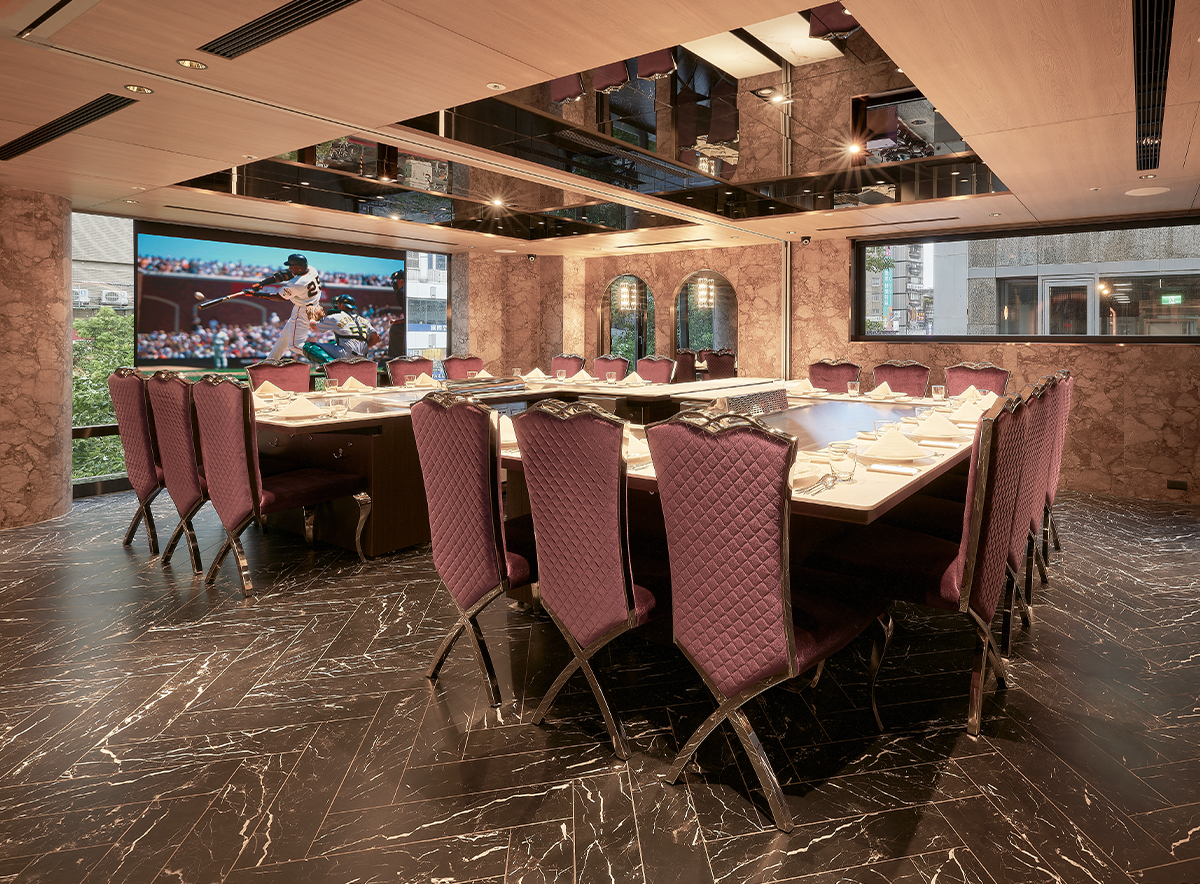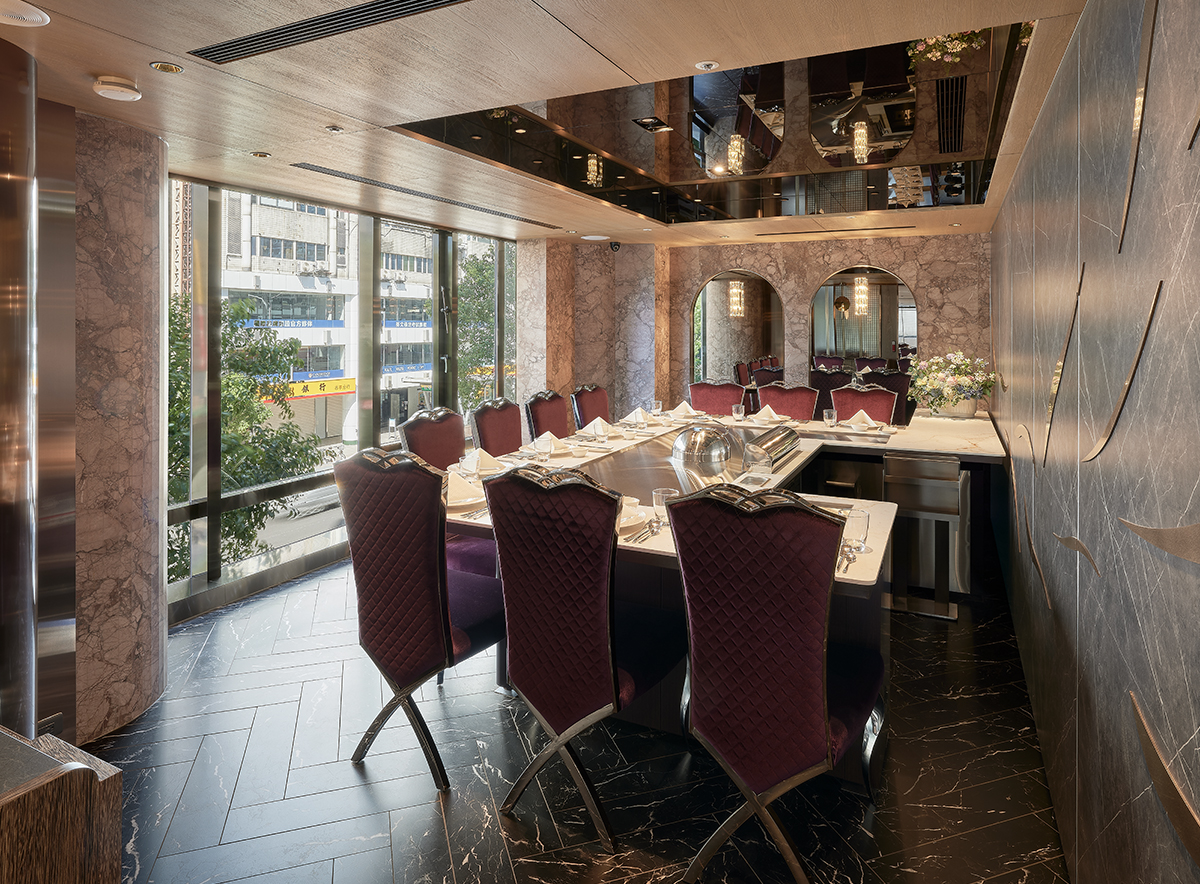Blending timeless French elegance with contemporary design, Mosun Guting creates a dining atmosphere of refined sophistication. Inspired by traditional French wine cellars, our space features distinctive arched vaults that exude a sense of heritage, complemented by warm, meticulously crafted lighting to welcome guests into an inviting culinary haven.



Thoughtfully designed to accommodate the restaurant's unique layout, the arched structures interplay with soft lighting to seamlessly merge classical and modern aesthetics. This creates a visually harmonious yet striking impression, with fluid spatial transitions and layered depth. Our teppanyaki counter wraps around panoramic windows, allowing guests to enjoy lush greenery by day and glittering city lights by night.



Incorporating wine cellar design elements, the space embodies the perfect marriage of cuisine and fine wines—a masterful interpretation of the ultimate "gourmet meets vintage" dining experience. French wine cellar-inspired architecture showcasing cultural richness with modern flair. Regal purple seating adds a touch of luxurious mystique, elevating the teppanyaki experience. Where heritage meets innovation, each dish carries forward our commitment to "cultured sophistication"—delivering unparalleled taste and sensory delight. Here, every detail whispers elegance, inviting you to savor teppanyaki reimagined through a lens of artistry and grace.



Year-End Parties, Spring Celebrations, Business Gatherings, Group Events
Mosun offers tailored party packages to suit different budgets and needs.
For special occasions—whether intimate gatherings of under 10 guests, banquets for 20-50 people, or exclusive venue bookings for 60—we provide customized services. Options include refined personalized set menus, luxurious feasts, and business conference dining.
Additionally, we offer two private dining rooms equipped with projectors.
